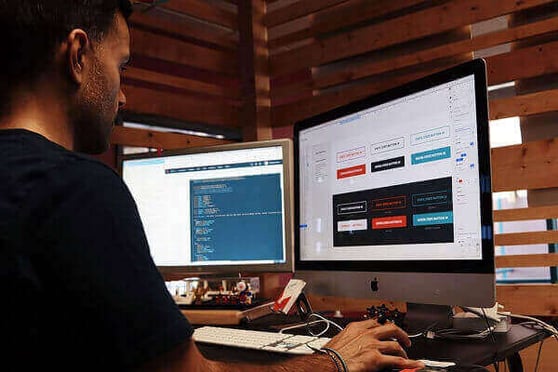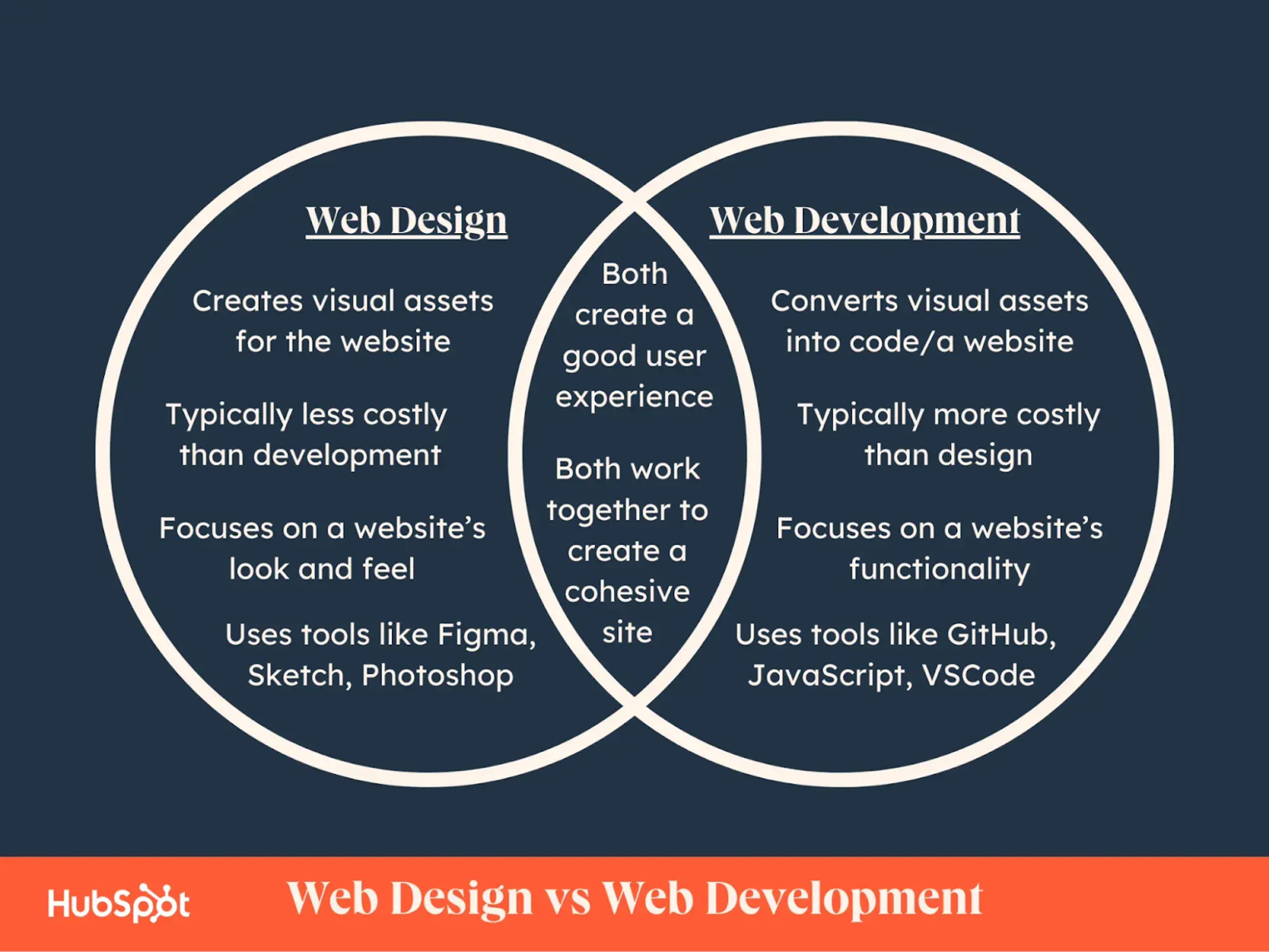Checking Out the Different Sorts Of Website Design and Their Unique Benefits
The landscape of Web layout encompasses a range of styles, each offering distinct advantages that accommodate various customer needs. Flat and minimal designs stress quality, while responsive and material layouts boost adaptability throughout gadgets. Typography-driven and illustrative approaches intend to enhance involvement and emotional vibration. Recognizing these diverse kinds can considerably influence individual experience and brand perception. What exists under the surface area of these layout options?
Minimal Web Layout

Minimalist Web layout frequently integrates a limited color scheme and straightforward typography, which not just improves aesthetic appeals but likewise enhances brand name identification. The decreased complexity can cause much faster packing times, even more enhancing individual fulfillment. Additionally, by lessening visual mess, customers can engage with web content much more properly, causing boosted understanding and retention. In general, minimal Web layout cultivates a smooth individual experience, making it a prominent choice for brands aiming to convey clarity and expertise in their on the internet visibility.
Receptive Web Layout
Responsive Web layout has ended up being crucial in today's digital landscape, making certain mobile compatibility for customers across various gadgets. This strategy substantially boosts customer experience by providing seamless navigation and availability, despite display dimension. As even more individuals access the Web on tablets and mobile phones, the value of receptive design remains to expand.

Mobile Compatibility Importance
As smart phone use remains to climb, making certain web sites work with numerous display dimensions has come to be vital for effective interaction and involvement. Mobile compatibility, frequently achieved via receptive website design, permits internet sites to adapt flawlessly to smart devices, tablets, and various other gadgets. This flexibility not just reaches a broader audience however likewise boosts brand name reliability. A web site that operates well on mobile phones mirrors professionalism and trust and interest to customer requirements. Furthermore, search engines prioritize mobile-friendly websites in their positions, making compatibility an essential factor for on-line visibility. By purchasing mobile compatibility, businesses can boost their digital presence and deal with the growing number of customers that access info on the go. Therefore, prioritizing mobile-responsive style is critical in today's digital landscape.
Improved User Experience

Apartment Layout
Level layout is a minimal technique to Web design that emphasizes simpleness and clearness. By getting rid of three-dimensional elements such as gradients, shadows, and appearances, level layout produces a visually appealing individual interface that prioritizes material and performance. This style promotes an intuitive navigation experience, as customers can swiftly recognize crucial features and activities without interruption.
One of the key advantages of level style is its responsiveness throughout numerous tools and screen dimensions. Its straightforward layouts and tidy lines adapt flawlessly, guaranteeing a regular experience for individuals on mobile, tablet, or desktop platforms. In addition, level style frequently incorporates strong shades and typography, enhancing visual effect and brand recognition.
Furthermore, the simplicity inherent in level design brings about quicker packing times, which contributes positively to individual contentment - web design. In general, flat style stays a popular choice for contemporary Web development, lining up with contemporary visual choices while providing exceptional functionality
Material Design
Product Layout stands for a style language created by Google that concentrates on developing a user-friendly and cohesive user experience throughout digital systems. This method emphasizes the use of grid-based formats, receptive computer animations, and depth impacts such as lighting and darkness, which help to develop a feeling of pecking order and spatial connections. By mimicking the real world, Product Style permits users to communicate with digital user interfaces in an extra all-natural and engaging way.
One of the vital advantages of Product Layout is its flexibility across various devices and display sizes, making certain a consistent experience for individuals. Furthermore, it promotes a clear visual language that improves functionality, making it easier for users to navigate complicated applications. The unification of dynamic shades and strong typography additionally plays a necessary role in attracting focus to essential elements, consequently boosting overall customer interaction - branding. Consequently, Product Layout has come to be a popular option amongst programmers seeking to develop functional and aesthetically appealing websites
Typography-Driven Design
Typography-Driven Design concentrates on the tactical use kind to improve the aesthetic and practical facets of an internet site. This style method prioritizes fonts, font sizes, spacing, and hierarchy to produce aesthetic interest and overview user experience. By very carefully picking typography, designers can convey brand name identification and stimulate feelings, making the material extra easily accessible and appealing.
Effective typography boosts readability and functionality, making certain that users can easily navigate the website and soak up details. The appropriate combination of type can likewise establish a clear visual pecking order, enabling individuals to quickly identify crucial messages and contacts us to action.
A typography-driven approach can be adjusted to various devices, making sure uniformity throughout platforms. This flexibility is crucial in today's multi-device landscape, where individual experience is vital. Inevitably, Typography-Driven Layout offers not only as a creative option but likewise as a useful component that significantly influences a site's effectiveness.
Illustrative Web Design
Illustratory website design utilizes aesthetic narration strategies that can substantially improve individual interaction. By incorporating special pictures, web sites can produce a remarkable brand name identification that reverberates with their audience. This strategy not only mesmerizes visitors yet likewise communicates messages in an aesthetically engaging way.
Aesthetic Storytelling Techniques
A wide variety of Web developers utilize aesthetic storytelling strategies to create engaging and immersive user experiences. This technique integrates typography, design, and images to tell a tale that reverberates with individuals on a psychological level. By integrating engaging visuals, designers can effectively convey messages and stimulate feelings, guiding visitors through a brand's journey. Infographics, computer animations, and interactive elements offer to enhance stories, making complicated info much more read memorable and available. Additionally, visual narration can develop a natural brand identification, as constant images and styles strengthen core values and messages. Ultimately, this strategy not just mesmerizes customers yet likewise cultivates a deeper connection with the web content, motivating expedition and retention. Through skilled application, visual storytelling changes common Web experiences right into dynamic and significant interactions.
Enhancing Individual Involvement
Reliable website design greatly boosts individual engagement by leveraging illustrative elements that draw focus and foster interaction. Images can simplify intricate concepts, making them extra remarkable and friendly for customers. They damage the monotony of text-heavy web pages, developing visual breaks that welcome expedition. In addition, one-of-a-kind pictures can stimulate feelings, encouraging customers to get in touch with the content on a much deeper degree. Interactive components, such as animations or hover impacts, can additionally enhance involvement by inviting individuals to participate actively instead of passively taking in details. This strategy not only maintains site visitors on the website longer but likewise raises the probability of return check outs. Ultimately, efficient illustratory Web style transforms the user experience, making it much more impactful and delightful.
Branding With Picture
Visual components play a considerable role in forming a brand name's identity, and illustrations are a powerful device hereof. Illustrative Web style allows brand names to communicate their one-of-a-kind individuality and values you can try this out through custom art work. This method fosters a much deeper emotional connection with the audience, improving memorability and interaction. By integrating pictures, brands can differentiate themselves in a congested marketplace, producing an unique visual story that resonates with their target demographic. In addition, illustrations can streamline intricate concepts and make content extra accessible, effectively interacting messages in an interesting way. On the whole, branding with illustration not just enriches the customer experience but also reinforces brand acknowledgment, making it a useful approach for businesses aiming to establish a solid online existence.
Frequently Asked Inquiries
Exactly how Do I Select the Right Web Layout Kind for My Company?
To pick the right Web design type for a company, one must assess goals, target market, and market criteria. Evaluating customer experience and functionality will guide the option procedure for perfect engagement and efficiency.
What Tools Are Best for Creating Various Website Design Designs?
Popular tools for producing varied website design styles include Adobe XD, Figma, Map Out, and WordPress. Each offers one-of-a-kind attributes tailored to various layout demands, making it possible for designers to develop visually appealing and functional websites efficiently.
Exactly How Much Does Professional Website Design Usually Expense?
Expert website design usually costs between $2,000 and $10,000, depending on complexity, features, and developer proficiency. Personalized solutions and recurring maintenance might enhance expenditures, while layouts can provide more budget-friendly options for simpler tasks.
Can I Incorporate Numerous Web Layout Keys In Successfully?
Yes, incorporating numerous website design kinds can be effective. By incorporating aspects from different designs, developers can develop one-of-a-kind, engaging user experiences that cater to diverse target markets while improving capability and aesthetic charm.
Just How Do Style Patterns Influence Individual Experience and Involvement?
Layout fads substantially affect individual experience and interaction by enhancing visual charm, improving navigation, and promoting psychological links - branding. Staying updated with trends permits developers to develop intuitive user pop over to these guys interfaces that reverberate with individuals and encourage prolonged communications
Level and minimalist designs emphasize clarity, while receptive and material styles improve convenience throughout devices. It might seem counterintuitive, minimalist Web style emphasizes simplicity to boost user experience. Responsive Web style plays a necessary duty in boosting individual experience by ensuring that an internet site adapts seamlessly to different screen sizes and gadgets. Level design is a minimal method to Web style that highlights simpleness and clearness. Material Style stands for a layout language established by Google that concentrates on creating a intuitive and natural user experience across electronic platforms.